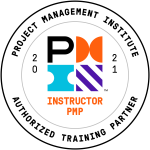The Assessment Strategy must follow the Strategy defined by this Course/Examination Content outline.
Course & Examination Content Outline (CCO/ECO’S)
Risk Strategy and Planning
Gather and review documents
- Determine and assign who is responsible for the preliminary document analysis (e.g., project manager, risk manager, financial controller)
- Establish documents relevant to the risk process
Assess the project environment for threats and opportunities
- Determine which OPA / EEF/project methodology is needed (e.g., agile, waterfall, hybrid, Analyze the different environmental factors to be considered in the planning phase (e.g., PESTLE, SWOT analysis)
- Determine the organizational and cultural risk appetite
- Evaluate the project management information system process and data
- Conduct a stakeholder analysis
- Analyze constraints to risk management
Confirm risk thresholds based on risk appetites: Align project risk thresholds to organizational risk appetite
Establish a risk management strategy
- Establish risk processes and tools
- Provide risk management templates/forms
Document the risk management plan
- Define organizational risk roles and responsibilities
- Prepare a list of the key artifacts/resources that will be used to compile a risk management Certification plan
Plan and lead risk management activities with stakeholders: Train, coach, and educate stakeholders in risk principles and processes in order to create a shared understanding of principles and processes, and foster engagement in risk management.
Assessments
Give examples of preliminary documents to review prior to risk identification including industry benchmarks (if available), previous lessons learned, historical data, and the sources of the above information
- Analyze the environment for risk culture maturity
- Government, market laws/rules, organizational, environmental, and technical risks
- Discuss risk thresholds
- Align roles and responsibilities with a project RAM
- Set appropriate expectations with stakeholders regarding the rules of engagement
Risk Identification
Conduct risk identification exercises
- Conduct meetings, interviews, focus groups, and other SME support activities
- Perform detailed analyses of risk identification exercise results
Examine assumption and constraint analyses
- Leverage the results of the assumption and constraint analysis
- Categorize assumptions and constraints
- Assess the risk associated with each assumption and/or constraint
Document risk triggers and thresholds based on context/environment: Assess, confirm, and document risk compliance thresholds, and categories against updated risk data
Develop risk register
- Analyze the validity of identified risks and triggers
- Classify risks as threats or opportunities
Assessments
- Analyze documents, audio transcripts, telemetry data, etc., and understand the business context of information
- Recognize the relationship between assumptions and/or constraints, and project objectives
- Assess and document risk triggers, causes, and timing
- Examine the risk attributes like probability, impact, urgency
Risk Analysis
Perform qualitative analysis
- Prioritize the risk based on impact and urgency
- Apply the risk matrices
Perform quantitative analysis
- Analyze risk data and process performance information against established metrics
- Perform a forecast and trend analysis on new and historical information
- Perform sensitivity analysis
Identify threats and opportunities
- Assess project risk complexity
- Assess project compliance objectives against organizational strategic objectives
Assessments
- Agreed-upon assessment approach, Historical information, Definitions of probability and impact, Risk categories, Pre-established criteria
- Assess the results with Monte Carlo, decision trees, critical path, expected monetary value technique
- Perform SWOT analysis, Ishikawa, and Tree Diagram
Risk Response
Plan risk response
- Determine appropriate risk response strategy
- Assess the effectiveness of the risk response actions against the identified strategy and the project objective’s impact
- Illustrate and communicate the effectiveness of the risk response strategies
Implement risk response
- Execute the risk response plan
- Execute the contingency plan
Assessments
- Avoid, accept, mitigate, enhance, contingency planning
- Cost, Time & Environment effect of the action on the probability or the risk impact
- Evaluate and react to secondary and residual risks from the response implementation
Monitor and Close Risk
Gather and analyze performance data
- Reconcile performance data & reports from risk-relevant work packages
- Monitor impact against overall project risk exposure to enterprise
- Monitor residual & secondary risks
- Monitor risk response and document residual risk
- Monitor risk response for secondary risks
Provide the information required to update relevant project documents
- Aggregate and summarize risk data, and update project documents
- Monitor and close out expired risks
Monitor project risk levels
- Prepare reports for different stakeholders
- Communicate risk levels to key stakeholders
Assessments
- Analyze data to determine the completion status against the baseline
- Perform a variance analysis
- Assess the impact of residual and secondary risks on project objectives
- Update risk register, lessons learned, project management plan, and change logs
- Assess the project risk level



